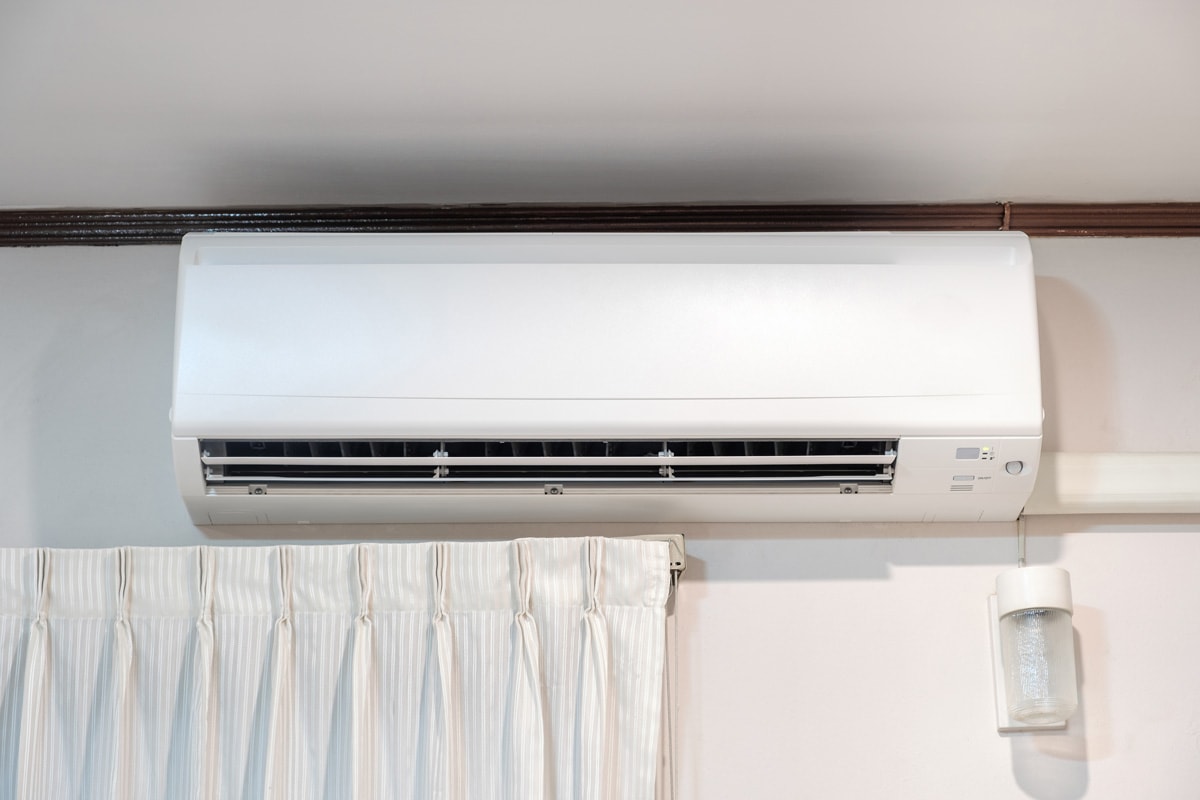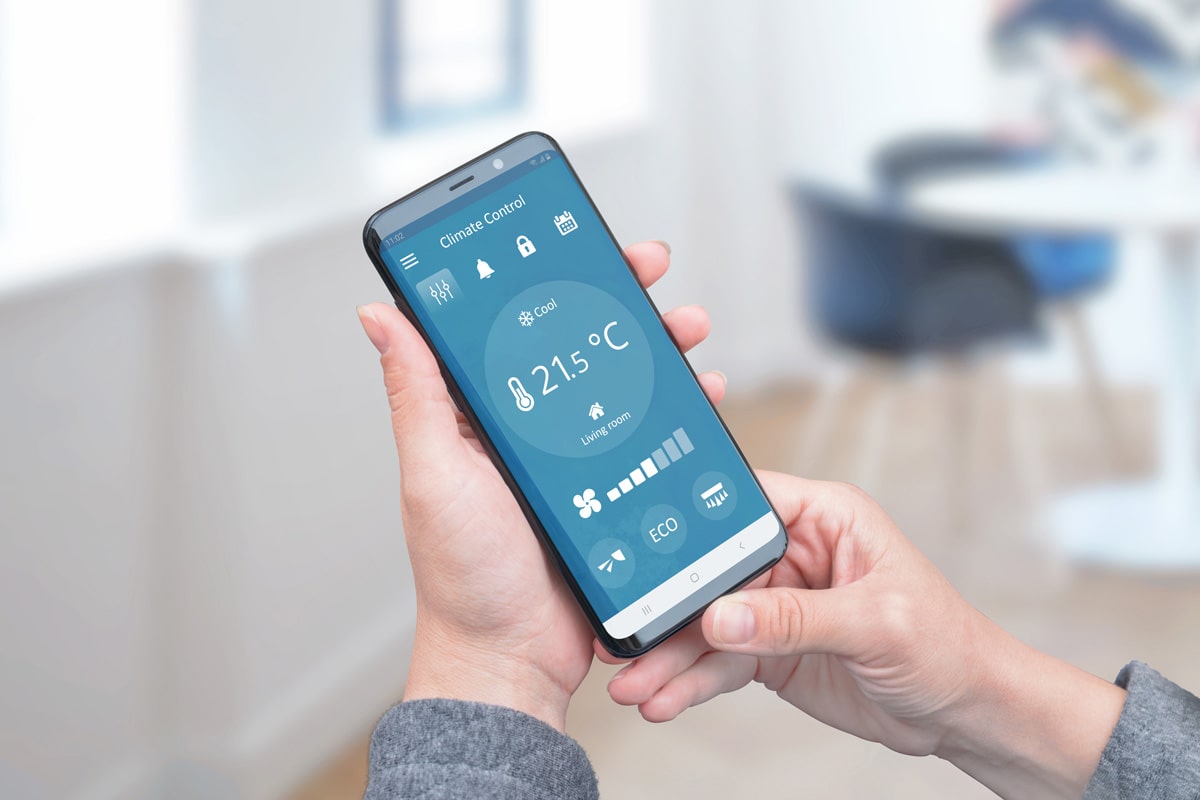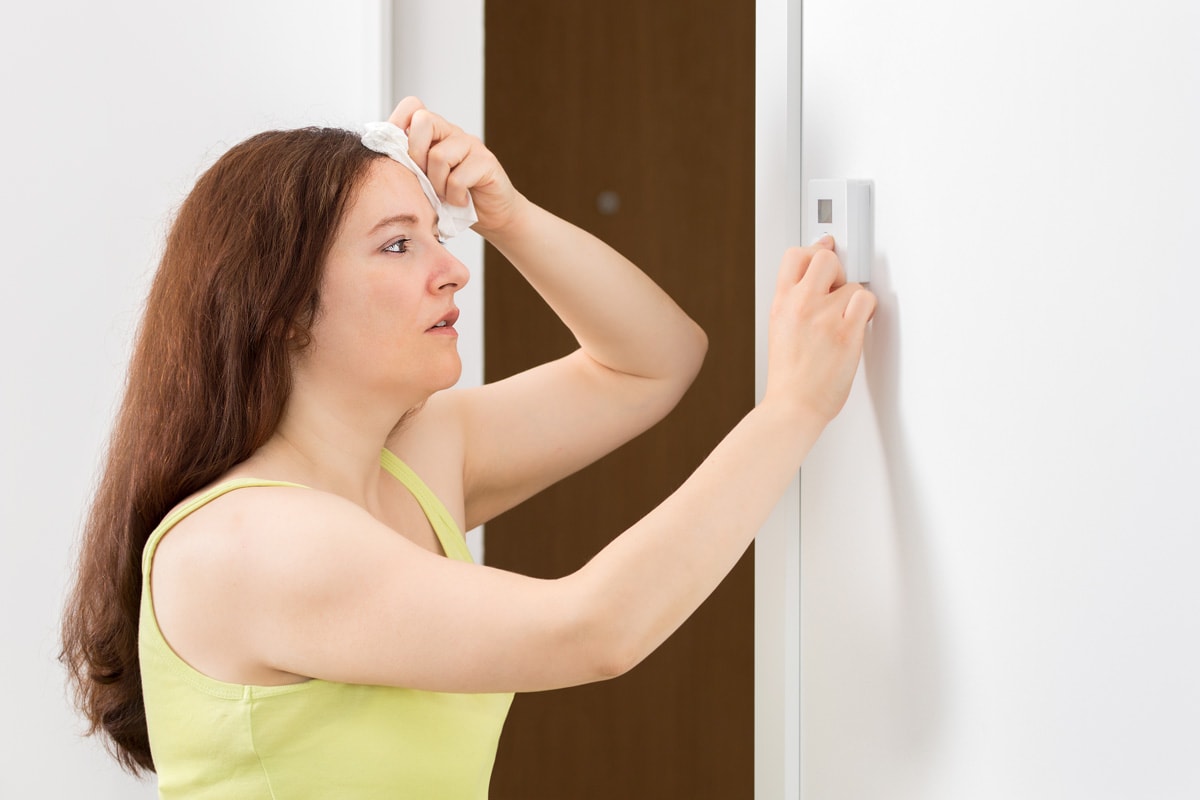Thermostats help with effective cooling around your home and serve as a controller for your air conditioning unit. But in some cases, a thermostat may be unavailable or broken. If you've encountered this problem, you're probably wondering if can you run your AC without one, and how to do it. We've done the research and summed up the answers in this post.
Yes, you can run and control an AC unit without a thermostat, but your actions will be limited to starting and stopping the unit. Here are a couple of ways you can control your AC without a thermostat:
- Use the power button.
- Control it through smart apps and devices.
- Rewire the control board.
- Use the circuit breaker.
Whether your thermostat uses a remote control or not, it's essential to know additional ways to run the AC. Keep reading to learn other methods to do this.
![Woman who's sitting on sofa under warm plaid in living room switches off her air conditioner on wall. Young girl adjusting modern AC system, regulating temperature and enjoying cool fresh air at home, How To Run AC Without A Thermostat? [Inc. Start And Stop Instructions]](https://hvacseer.com/wp-content/uploads/2022/10/32.-HOW-TO-RUN-AC-WITHOUT-A-THERMOSTAT-INC.-START-AND-STOP-INSTRUCTIONS.jpg)
Can An AC Work Without Using A Thermostat?

Yes, air conditioners can work fine without a thermostat, but they are less energy-efficient in this situation. It could result in higher power costs and fluctuating temperatures.
Thermostats benefit homeowners by maintaining indoor temperatures and helping the air conditioner run with less power consumption. So we recommend installing a thermostat for your AC, regardless of the model you use.
Click here to see this smart thermostat on Amazon.
However, you may not need to install a thermostat unless your unit requires it. Some air conditioners also come in models that use different control methods, such remote controls or apps.
If you own one of these, you're likely to use your AC the same way even when you remove the thermostat.
Read this post if you want to know if your baseboard heater needs a thermostat: Does A Baseboard Heater Need A Thermostat?
How To Operate An Air Conditioner With No Thermostat
If your AC did not come with a thermostat, or if your thermostat is broken, you can try using other methods depending on your unit type.
Here are a few ways to run your air conditioner without using a thermostat.
Use The Power Button

Your AC will likely have a manual power button that you can push to turn it on or off when other methods fail. It is usually located near the display panel or inside the front cover.
If you can't find it in these locations, look around the unit to see if it's hidden under filters or other parts. If you still can't locate it, look through your air conditioning unit's manual for instructions or contact your manufacturer for assistance.
Once you find the power button, you need to push or switch it to turn it on or off.
Control It Through Smart Apps And Devices

If your air conditioning unit connects to a smartphone or other smart home systems, you can start or stop it using those apps or devices. When you open the app or device, choose the options or commands needed to switch the AC on or off.
Using a smartphone or home system to control your air conditioner is one way to access it even when you're away from home. So, even without a thermostat, you have complete control of your AC wherever you go.
Rewire The Control Board
If you have a thermostat, you can consider rewiring or bypassing it. Note that handling wires can be tricky, so it's good to ask for assistance from someone familiar with them.
You should also remember that this method works for simple heating and cooling systems. If your HVAC has more connections or different wires, refrain from rewiring them unless you're sure what each is.
When trying this method, your AC won't start or stop automatically or in a single push like the other methods. Here is how it works.
Starting The AC
This video does a great job of explaining what you should do:
Listed below are the steps you need to follow:
- Check where each wire goes on the terminal, noting its colors. It's crucial to ensure how you connect them to the control board to prevent tripping it.
- Cross the red and green wires together to turn on the fan. Hold it for a few seconds.
- When you hear the fan open, cross the yellow wire with the red and green ones to turn on the outside unit.
- Leaving them crossed will keep the AC running.
- Set the wires aside to a less accessible area where objects or individuals cannot easily touch them.
Stopping The AC
Shutting off your AC using this method follows a quicker process than starting it. All you have to do is uncross the wires and wire them back into the control board unit.
Be careful when putting them back, and ensure each wire is in its respective terminal, as you noted before starting. Placing the wires in the wrong place could cause the board to trip.
Use The Circuit Breaker
Another less risky way to turn your AC on and off is through the circuit breaker. It's best to do this when your air conditioner has a separate breaker box or switch in the control panel. That way, you won't have to keep repeatedly shutting everything on and off.
You only need to flip the switch depending on whether you want the AC on or off. Using the circuit breaker also helps you save more electricity, but repeatedly flipping its switch can damage it and may cause electrical hazards.
Consider using the circuit breaker method if you turn your air conditioning unit on or off occasionally or seasonally.
Signs Of A Faulty AC Thermostat

If you own a thermostat but can't seem to figure out whether it's broken or not, look for the following indications.
No Response To Temperature Change
A thermostat is faulty if it's stuck at the same temperature or fails to change despite different conditions, even after eliminating possible causes for dormant readings.
You can try to fix this by changing the thermostat's location, ensuring it's away from heat sources, appliances, open windows or doors, and vents.
If these don't work, the sensor may have a problem. One way to check this is by cleaning the thermostat using a cloth or soft brush.
If the issues are not cleared, it may be time to call a professional.
AC Keeps Running, Shutting Off, Or Won't Turn On
If your AC is behaving abnormally, the first thing you should check is the thermostat. Thermostats can spontaneously turn your air conditioning unit on and off, depending on how the settings are set up.
If your AC keeps running without cycling, the relays may be stuck. If it constantly shuts off, even without reaching the desired temperature, it has something to do with the temperature readings. If it stays off, the wiring could be loose or damaged.
Learn more about why it won't shut off in this post: Thermostat Not Shutting Off When Reaching The Temperature – What To Do?
Blank Or No Display
There are several reasons for a blank thermostat display, varying from power issues to severe damages.
Start with checking the power by replacing batteries, inspecting power outlets, replacing blown fuses, or fixing tripped breakers.
If this isn't the problem, observe the wiring to see if there are any loose or broken connections. Anything beyond these should be repaired by an HVAC professional.
Inaccuracy Or Fluctuating Temperature
Fluctuating temperatures can lead to further problems, like increasing energy bills and lower air quality and comfort around the home. You will probably be able to notice fluctuating temperatures quickly, even without regularly checking the thermostat.
There are also instances where the temperature readings are inaccurate, causing the heating and cooling system to operate ineffectively.
You can test this by placing a regular thermostat in the same room as the faulty one. Leave them for a few minutes under the same conditions before checking the results.
If the readings are the same, your thermostat is operating well. If not, inspect the device for any signs of damage.
Contact an HVAC professional for any further complications or if you're unsure about the source of the problem.
In Closing
Thermostats increase the efficiency of an air conditioner while controlling it, but you don't always need to have one to continue operating your AC.
In the event that you can't use a thermostat for your AC, it's good to know alternative ways to start or stop the system.
These methods include locating the manual power button, controlling the unit using smart apps and devices, rewiring the control board, and using the circuit breaker. Above all else, it's best to maintain an energy-efficient home.

